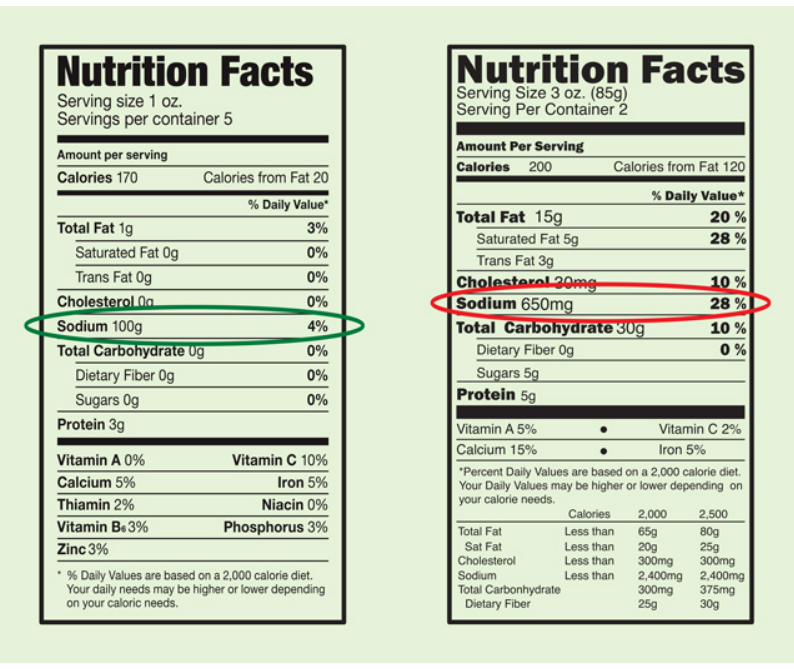
Know Your Sodium
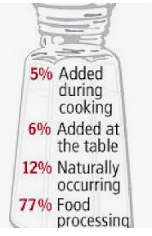 Managing Salt Intake for High Blood Pressure
Managing Salt Intake for High Blood Pressure
Reducing your salt intake is one of the best steps you can take to lower your blood pressure. Here’s how you can take control of your sodium consumption.
1. Limit Restaurant and Processed Foods
- 77% of the salt in your diet comes from processed foods and meals eaten at restaurants.
- Most restaurants add a significant amount of salt during food preparation.
- Tip: Limit eating out to once a week, and when you do, ask for your meal to be prepared with no added salt.
2. Cook at Home with Fresh Ingredients
- Home-cooked meals give you control over the amount of salt you consume.
- When cooking, aim to add minimal or no salt during preparation and seasoning.
- Instead of salt, flavor your food with herbs, spices, and other natural ingredients.
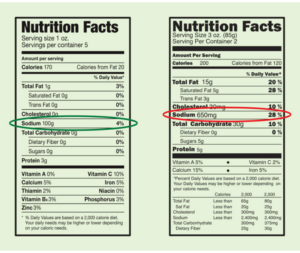 3. Read Nutrition Labels: Look for Low Sodium
3. Read Nutrition Labels: Look for Low Sodium
- Always check the sodium content on the nutrition label of any packaged food.
- Low sodium: Less than 150 mg per serving or 5% Daily Value (DV) or less.
- High sodium: More than 400 mg or 15% DV or higher.
- Tip: The lower the percentage, the better! Look for “no salt added” or “low sodium” options.
4. Check Serving Sizes
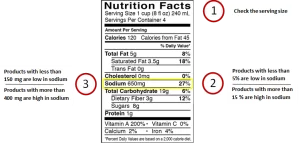
- Pay attention to portion sizes listed on the label.
- If the serving size is 1 cup but you eat 2 cups, you’re getting double the sodium listed.
- This is especially important because even seemingly small portions can pack in a lot of sodium.
5. Know Your Daily Sodium Limit
- Daily sodium intake should be less than 2,300 mg (about 1 teaspoon of salt).
- For individuals with high blood pressure, aim for 1,500 mg or less per day.
- Remember, sodium adds up quickly, so being mindful of all the sources of salt in your diet is key.
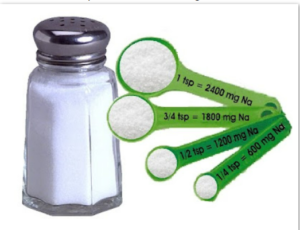
Take Action Today:
- Plan your meals in advance, focusing on fresh, whole foods.
- Check food labels every time you shop to make healthier choices.
- Monitor your sodium intake, and over time, your taste buds will adjust to less salt.
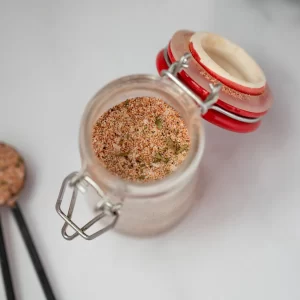 Try This: No-Salt Seasoning Recipe
Try This: No-Salt Seasoning Recipe
To help manage your sodium intake, try creating your own no-salt seasoning blend! This recipe is versatile and can be customized to your taste preferences.
All-Purpose No-Salt Seasoning Mix
This salt-free seasoning is from my mother-in-law, Helen. It’s scrumptious on almost everything. I make big batches and use them for teacher gifts.
- Prep Time: 5 minutes
- Total Time: 5 minutes
- Servings: 10
Ingredients
- 1 tablespoon garlic powder
- 1 ½ teaspoons dried basil
- 1 ½ teaspoons dried parsley
- 1 ¼ teaspoons dried WILDCARD (your favorite herb)
- 1 ¼ teaspoons ground thyme
- 1 teaspoon ground WILDCARD (your favorite spice)
- 1 teaspoon onion powder
- 1 teaspoon ground black pepper
- 1 teaspoon dried sage
- ¼ teaspoon cayenne pepper
Directions
- Gather all ingredients.
- Mix together garlic powder, basil, parsley, thyme, onion powder, black pepper, sage, and cayenne pepper in a bowl.
- Store in a sealed jar.
Nutrition Facts (Per Serving):
Calories: 7, Total Fat: 0g, Sodium: 1 mg, Total Carbohydrate: 1g, Dietary Fiber: 0g, Total Sugars: 0g, Protein: 0g, Vitamin C: 1mg, Calcium: 15mg, Iron: 1mg, Potassium: 27mg.
By following these steps and using simple recipes like this, you’ll take control of your sodium intake, support a healthier heart, and manage your blood pressure effectively.
Meet Our Doctors





